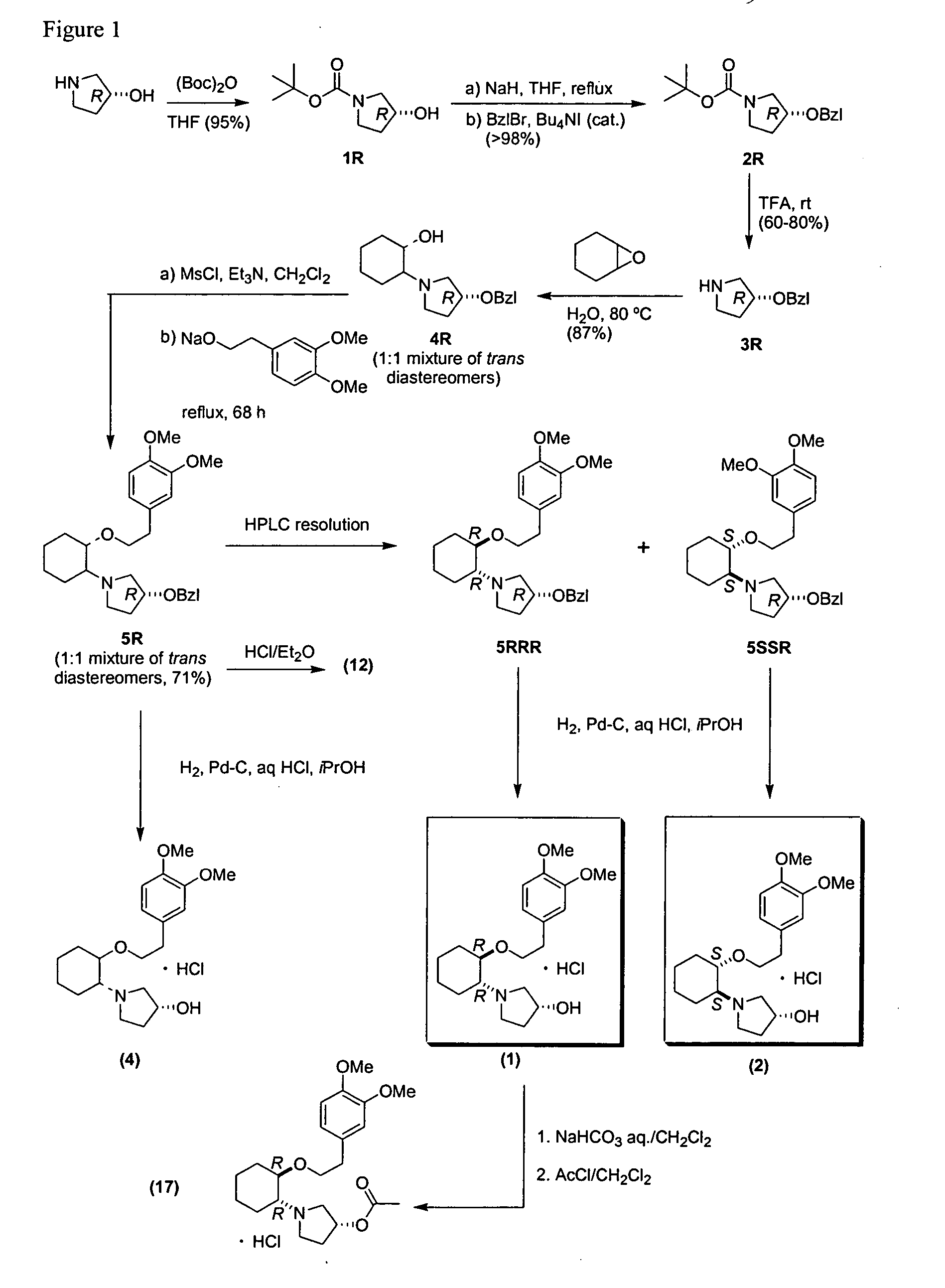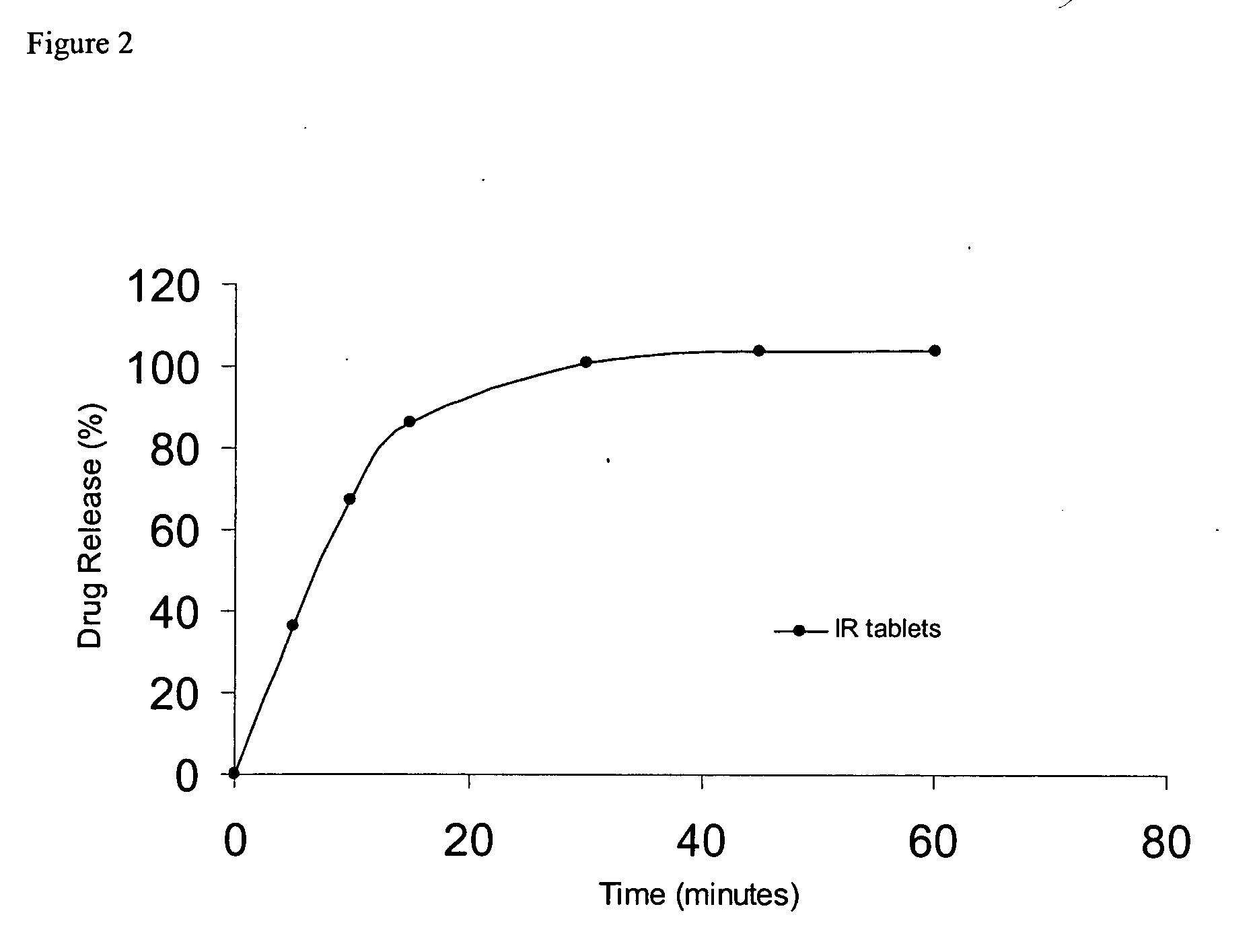Uses of ion channel modulating compounds
- Summary
- Abstract
- Description
- Claims
- Application Information
AI Technical Summary
Benefits of technology
Problems solved by technology
Method used
Image
Examples
example 1
Termination of Atrial Fibrillation
Step Dosing IV Study in Human Subjects
A prospective double-blind, placebo-controlled, randomized, dose-response trial was conducted. The compound used in these studies is (1R, 2R)-2-[(3R)-hydroxypyrrolidinyl]-1-(3,4-dimethoxyphenethoxy)cyclohexane monohydrochloride, which has structural formula
To be eligible, patients had to have a rhythm of sustained atrial fibrillation with a duration of 3-72 hours at the time of randomization. Patients were managed in accordance with ACC / AHA / ESC anticoagulation practice guidelines. Patients>21 years of age were eligible. All patients had to be hemodynamically stable (systolic blood pressure of 90-160 mm Hg with diastolic blood pressure<95 mm Hg).
Patients were excluded for the following reasons: female patients of child-bearing potential; weight>300 lb; history of long QT syndrome, torsade de pointes or an uncorrected QT interval of>450 ms; QRS>120 ms; myocardial infarction, symptoms of angina, conges...
example 2
Pharmacokinetic Evaluation of Oral Dosing in Human Subjects
This prospective, randomized, placebo-controlled, double-blind, ascending dose study was conducted to assess safety and oral absorption of (1R, 2R)-2-[(3R)-hydroxypyrrolidinyl]-1-(3,4-dimethoxyphenethoxy)cyclohexane monohydrochloride in healthy volunteers. Safety and tolerance were monitored through 12-lead ECG, Holter and telemetry recordings and monitoring of clinical observations, vital signs, clinical chemistries and haematology. The pharmacokinetics was assessed through measurement of (1R, 2R)-2-[(3R)-hydroxypyrrolidinyl]-1-(3,4-dimethoxyphenethoxy)cyclohexane monohydrochloride levels in both urine and plasma.
The Cmax in fasted volunteers was 1.8±0.4 μg / ml after the 5 mg / kg p.o. dose and 1.9±0.5 μg / ml after the 7.5 mg / kg p.o. dose. In fed volunteers, the Cmax was 1.3±0.7 μg / ml after the 5 mg / kg p.o. dose. There were no statistically significant differences in Cmax, time to maximum plasma levels (Tmax), or bioavailab...
example 3
Pharmacokinetic Evaluation of (1R, 2R)-2-[(3R)-hydroxypyrrolidinyl]-1-(3,4-dimethoxyphenethoxy)cyclohexane monohydrochloride in Dogs
In this study, the pharmacokinetics of (1R, 2R)-2-[(3R)-hydroxypyrrolidinyl]-1-(3,4-dimethoxyphenethoxy)cyclohexane monohydrochloride in beagle dogs after dosing via oral gavage, intraduodenally (ID) and intracolonically (IC) was investigated. Pharmacokinetic parameters such as AUC0-t, Cmax and Tmax were determined. The segmental dependence to absorption of (1R, 2R)-2-[(3R)-hydroxypyrrolidinyl]-1-(3,4-dimethoxyphenethoxy)cyclohexane monohydrochloride was also evaluated.
Dosing solutions for all routes of administration were prepared using the same procedure as follows: 425 mg of (1R, 2R)-2-[(3R)-hydroxypyrrolidinyl]-1-(3,4-dimethoxyphenethoxy)cyclohexane monohydrochloride (lot#BC-145-39, 99.3% active) was weighed into a precleaned 20 mL glass vial. 21 mLs of water was added and the sample was inverted several times to dissolve all powder. At the time...
PUM
| Property | Measurement | Unit |
|---|---|---|
| Time | aaaaa | aaaaa |
| Time | aaaaa | aaaaa |
| Concentration | aaaaa | aaaaa |
Abstract
Description
Claims
Application Information
 Login to View More
Login to View More - R&D
- Intellectual Property
- Life Sciences
- Materials
- Tech Scout
- Unparalleled Data Quality
- Higher Quality Content
- 60% Fewer Hallucinations
Browse by: Latest US Patents, China's latest patents, Technical Efficacy Thesaurus, Application Domain, Technology Topic, Popular Technical Reports.
© 2025 PatSnap. All rights reserved.Legal|Privacy policy|Modern Slavery Act Transparency Statement|Sitemap|About US| Contact US: help@patsnap.com



